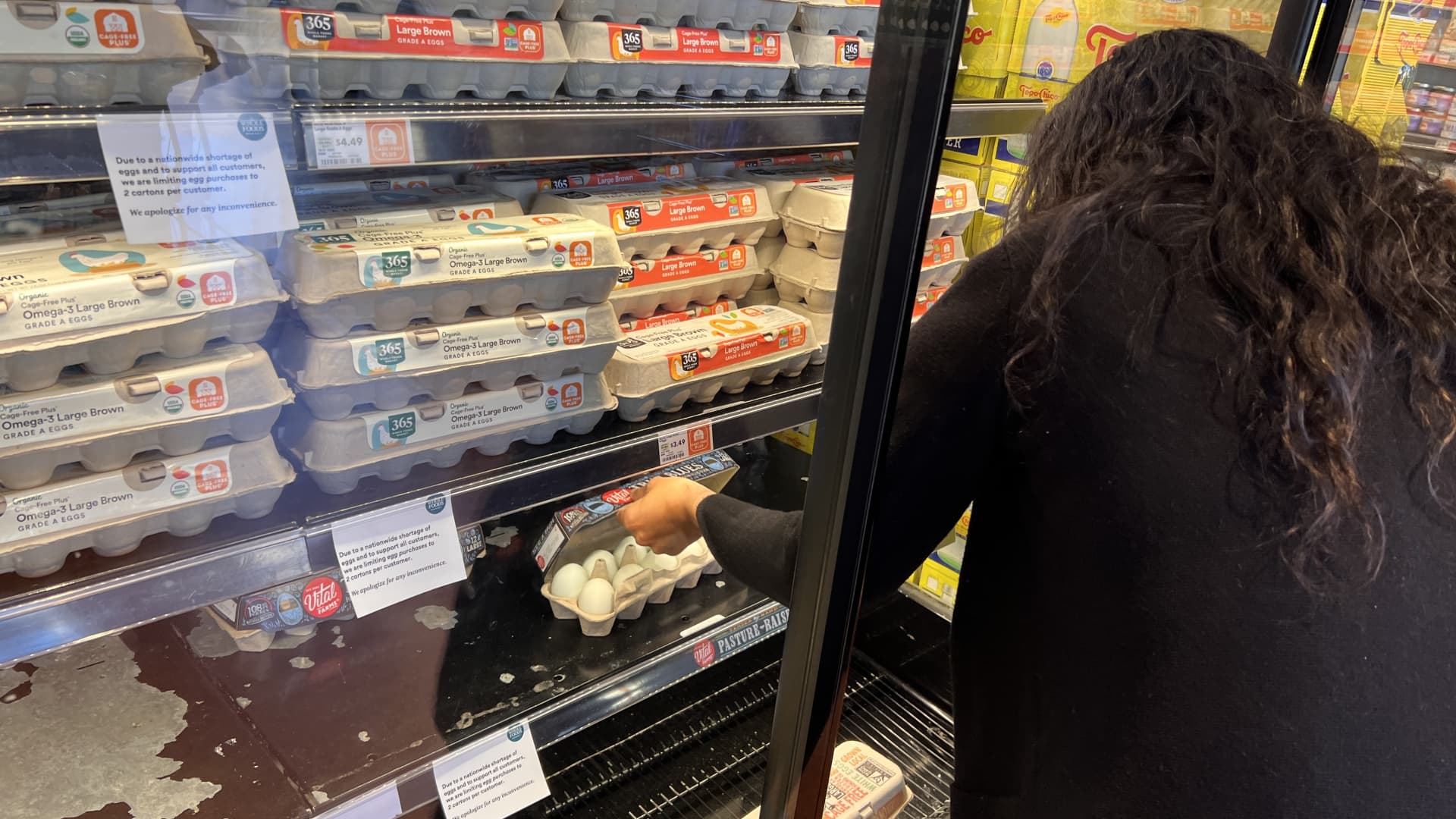
Consumers spent less in December even as an inflation measure considered key by the Federal Reserve showed the pace of price increases easing, the Commerce Department reported Friday.
Personal consumption expenditures excluding food and energy increased 4.4% from a year ago, down from the 4.7% reading in November and in line with the Dow Jones estimate. That was the slowest annual rate of increase since October 2021.
On a monthly basis, so-called core PCE increased 0.3%, also meeting estimates.
At the same time, consumer spending was even less than already-modest estimates, indicating that the economy slowed at the end of 2022 and contributing to expectations for a 2023 recession.
Spending adjusted for inflation declined 0.2% on the month, worse than the 0.1% drop that Wall Street had been anticipating. That came despite a 0.2% increase in income, which met estimates.
Personal income increased 0.2% for the month, as expected.
The numbers come with Fed officials closely watching to measure the impact their rate increases have had on the economy. In line with other recent economic data, they show inflation persisting but at a slower pace than the level that had driven price increases in mid-2022 to their fastest pace in more than 40 years.
However, the data also shows that consumer spending, which drives more than two-thirds of all U.S. economic activity, is waning. Adjusted for inflation, real consumer spending declined 0.3%.
"Even if real consumption returns to growth over the first few months of this year, the disastrous end to the previous quarter means that first-quarter real consumption growth will be close to zero," said Paul Ashworth, chief North America economist for Capital Economics. Ashworth now expects first-quarter GDP growth to decline at a 1.5% annualized pace.
Consumers could get some help from the slowing pace of price increases.
Headline inflation rose 0.1% on a monthly basis and 5% from a year ago. That number, which includes the volatile food and energy components, was the lowest annual rate since September 2021.
"The overall decrease in consumer spending wasn't dramatic, and at the same time incomes rose and inflation fell," said Robert Frick, corporate economist with Navy Federal Credit Union. "Especially if inflation continues to fall at a steady rate, Americans should start feeling some financial relief this year."
The Fed watches core PCE closely as the measure takes into accounts changing consumer behavior, such as substituting lower price goods for higher-priced items, and strips out volatile food and energy prices.
Friday's report shows the continued shifting of inflation pressures from goods, which were in high demand in the earlier days of the pandemic, to services, where U.S. economic activity is traditionally focused.
On an annual basis, goods inflation rose 4.6%, down sharply from 6.1% in November, while services inflation held steady at 5.2%. Goods inflation peaked in June 2022 at 10.6%, while services inflation bottomed at 4.7% in July.
In an effort to bring down runaway inflation, the central bank in 2022 raised its benchmark borrowing rate from near-zero in March to a target range that's now 4.25%-4.5%.
Markets are nearly certain of another quarter percentage point increase at next week's Federal Open Market Committee policy, followed by the likelihood of a similar-sized hike in March.
The Fed is then expected to pause while it surveys the impact that the series of aggressive hikes has had on the economy. Officials hope to cool a red-hot labor market and reduce supply-demand imbalances that have led to the inflation surge.
Business - Latest - Google News
January 27, 2023 at 08:57PM
https://ift.tt/xRoWIJ7
Key Fed inflation measure eased in December while consumer spending also declined - CNBC
Business - Latest - Google News
https://ift.tt/dUcEGyi
Bagikan Berita Ini














0 Response to "Key Fed inflation measure eased in December while consumer spending also declined - CNBC"
Post a Comment